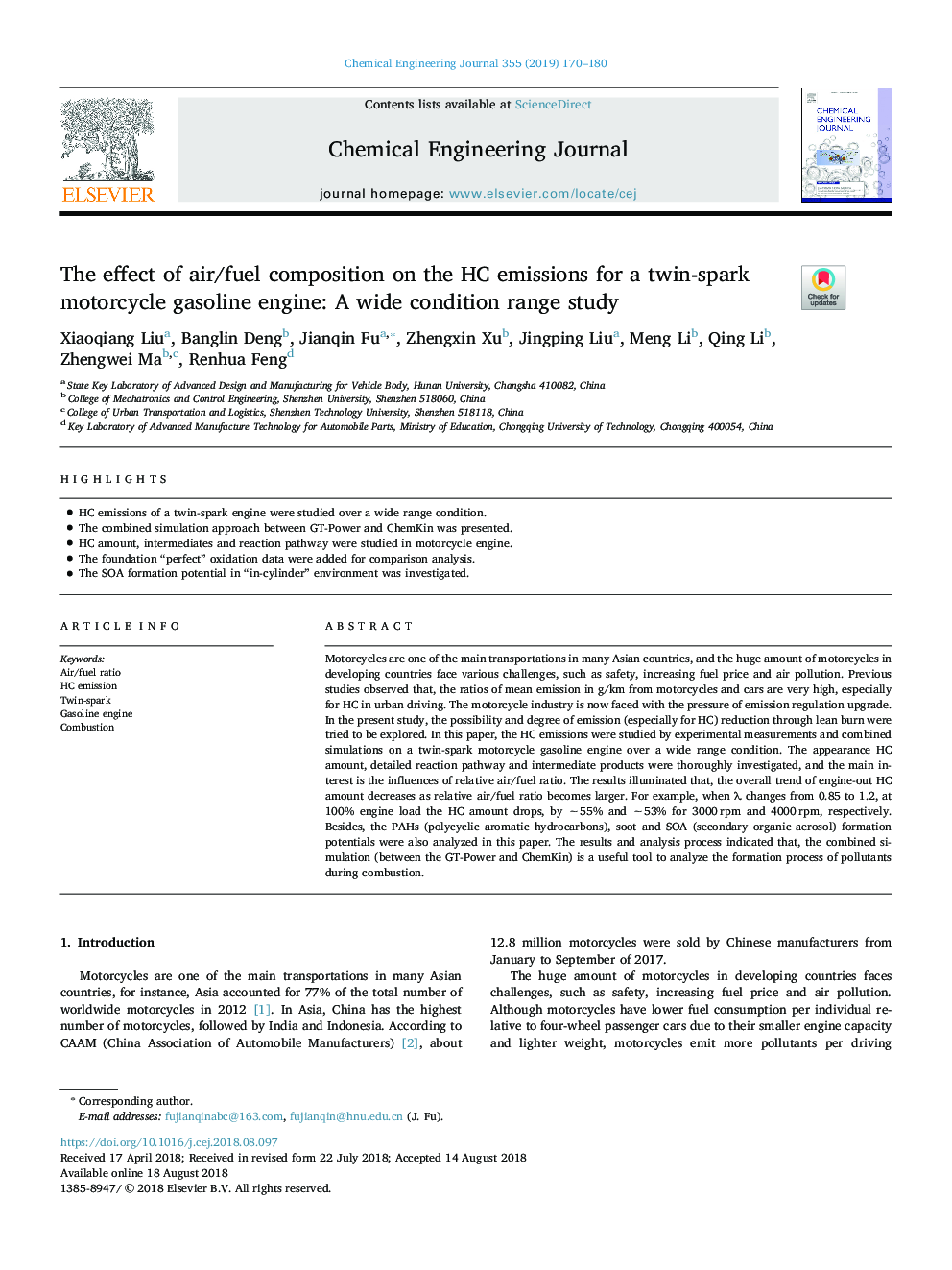| Article ID | Journal | Published Year | Pages | File Type |
|---|---|---|---|---|
| 8946807 | Chemical Engineering Journal | 2019 | 11 Pages |
Abstract
Motorcycles are one of the main transportations in many Asian countries, and the huge amount of motorcycles in developing countries face various challenges, such as safety, increasing fuel price and air pollution. Previous studies observed that, the ratios of mean emission in g/km from motorcycles and cars are very high, especially for HC in urban driving. The motorcycle industry is now faced with the pressure of emission regulation upgrade. In the present study, the possibility and degree of emission (especially for HC) reduction through lean burn were tried to be explored. In this paper, the HC emissions were studied by experimental measurements and combined simulations on a twin-spark motorcycle gasoline engine over a wide range condition. The appearance HC amount, detailed reaction pathway and intermediate products were thoroughly investigated, and the main interest is the influences of relative air/fuel ratio. The results illuminated that, the overall trend of engine-out HC amount decreases as relative air/fuel ratio becomes larger. For example, when λ changes from 0.85 to 1.2, at 100% engine load the HC amount drops, by â¼55% and â¼53% for 3000â¯rpm and 4000â¯rpm, respectively. Besides, the PAHs (polycyclic aromatic hydrocarbons), soot and SOA (secondary organic aerosol) formation potentials were also analyzed in this paper. The results and analysis process indicated that, the combined simulation (between the GT-Power and ChemKin) is a useful tool to analyze the formation process of pollutants during combustion.
Related Topics
Physical Sciences and Engineering
Chemical Engineering
Chemical Engineering (General)
Authors
Xiaoqiang Liu, Banglin Deng, Jianqin Fu, Zhengxin Xu, Jingping Liu, Meng Li, Qing Li, Zhengwei Ma, Renhua Feng,
